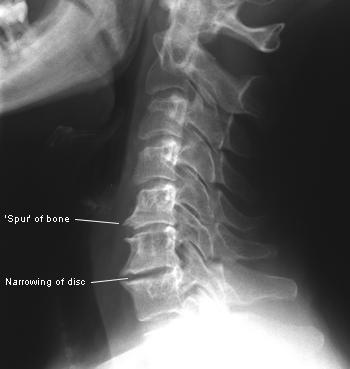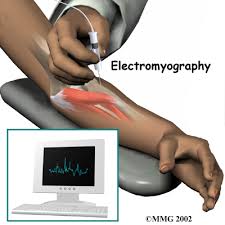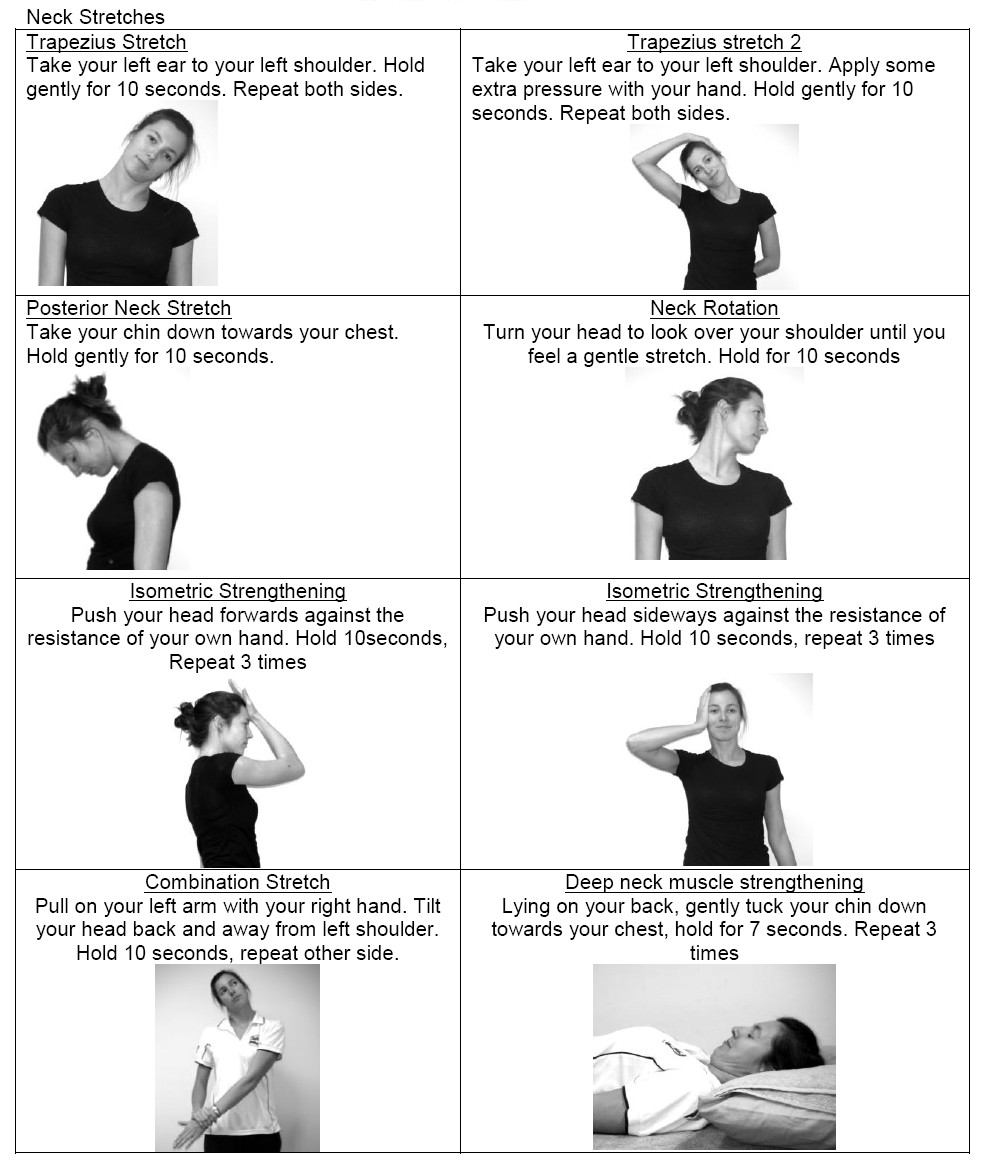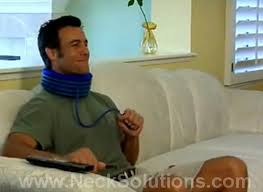Neck pain
The neck (cervical spine) is composed of vertebrae that begin in the upper torso and end at the base of the skull. The bony vertebrae along with the ligaments (which are comparable to thick rubber bands) and muscles provide stability to the spine. The muscles allow for support and motion. The neck has a significant amount of motion and supports the weight of the head. However, because it is less protected than the rest of the spine, the neck can be vulnerable to injury and disorders that produce pain and restrict motion. For many people, neck pain is a temporary condition that disappears with time. Others need medical diagnosis and treatment to relieve their symptoms.
Cause
Neck pain may result from abnormalities in the soft tissues—the muscles, ligaments, and nerves—as well as in bones and disks of the spine. The most common causes of neck pain are soft-tissue abnormalities due to injury (a sprain) or prolonged wear and tear. In rare instances, infection or tumors may cause neck pain. In some people, neck problems may be the source of pain in the upper back, shoulders, or arms.
Cervical Disk Degeneration (Spondylosis)
The disk acts as a shock absorber between the bones in the neck. In cervical disk degeneration (which typically occurs in people age 40 years and older), the normal gelatin-like center of the disk degenerates and the space between the vertebrae narrows. As the disk space narrows, added stress is applied to the joints of the spine causing further wear and degenerative disease. The cervical disk may also protrude and put pressure on the spinal cord or nerve roots when the rim of the disk weakens. This is known as a herniated cervical disk.
Injury
Because the neck is so flexible and because it supports the head, it is extremely vulnerable to injury. Motor vehicle or diving accidents, contact sports, and falls may result in neck injury. The regular use of safety belts in motor vehicles can help to prevent or minimize neck injury. A "rear end" automobile collision may result in hyperextension, a backward motion of the neck beyond normal limits, or hyperflexion, a forward motion of the neck beyond normal limits. The most common neck injuries involve the soft tissues: the muscles and ligaments. Severe neck injuries with a fracture or dislocation of the neck may damage the spinal cord and cause paralysis.
How to Ease Neck Pain at Home
If you have minor neck pain or stiffness, take these simple steps to relieve it:
• Apply ice for the first few days of your neck hurting. After that, apply heat with a heating pad, hot compress, or hot showers.
• Take over-the-counter pain relievers such as ibuprofen or acetaminophen.
• Take a few days off from sports, activities that aggravate your symptoms, and heavy lifting. Resume normal activity slowly as symptoms ease.
• Exercise your neck every day. Slowly stretch your head in side-to-side and up-and-down motions.
• Use good posture.
• Avoid cradling the phone between your neck and shoulder.
• Change your position often. Do not stand or sit in one position for too long.
• Get a gentle neck massage.
How Neck Pain Is Treated
You doctor will perform a physical exam and take your complete medical history. Be prepared to provide specifics about your symptoms, prescription and over-the-counter medications and supplements, and recent injuries or accidents, even if they don’t seem related.
Treatment for neck pain will depend on the diagnosis. Tests to determine the cause of neck pain may include:
• blood tests
•
X-rays

• computed tomography (CT) scan
• magnetic resonance imaging (MRI)
•
electromyography (EMG – a test that checks the health of muscles and the nerves that control muscles)

• lumbar puncture (spinal tap)
Depending on the results of these tests, your doctor may refer you to a specialist. Treatment for neck pain may include:
• ice and heat therapy
• exercise, stretching, and physical therapy
•

• pain medication
• corticosteroid injections
• muscle relaxants
• neck collar
•
traction

• antibiotics (if infection is involved)
• hospital treatment (if a condition such as meningitis or heart attack is the cause)
• surgery (rarely)
Alternative therapies include acupuncture, chiropractic, massage, and transcutaneous electrical nerve stimulation (TENS). Make sure you are dealing with a licensed professional when using these methods.